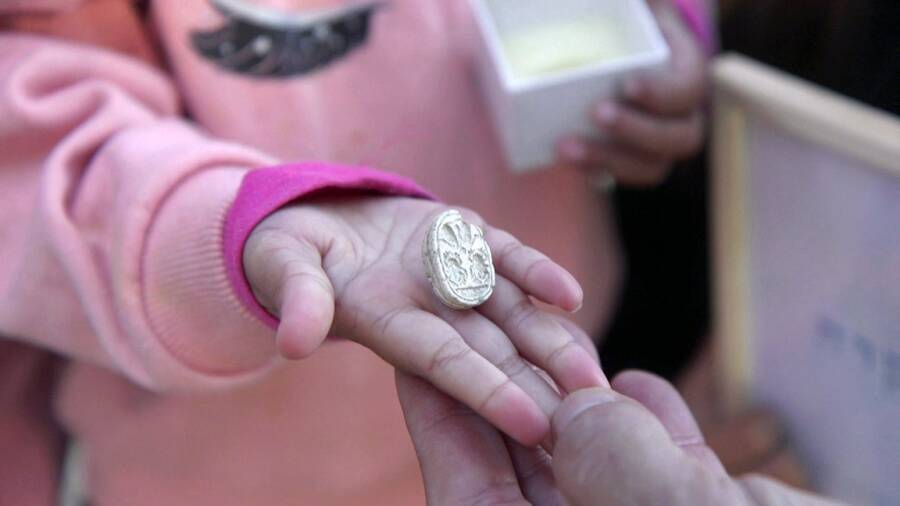The Extraordinary Stories Behind 11 Historical Artifacts That Were Discovered By Children
Archaeology is a fascinating field of study that changes with each new discovery. Often, these discoveries involve teams of experts who have spent years studying history and digging through the dirt in order to unlock the secrets of the past. However, this is not always the case.Here at All Thats Interesting, we often cover the discoveries made by amateur archaeologists, metal detectorists, and people who are just plain lucky. And while those stories are impressive, there is still one thing more remarkable than an adult making a serendipitous historical discovery: a child making one.One little girl stepped on an ancient sword while swimming in a Swedish lake. And a toddler in Israel plucked a 3,800-year-old amulet from the ground while on vacation with her family. These children werent trying to make history they were simply being kids.From prehistoric tools to Renaissance art, read on to learn about the most fascinating archaeological discoveries made by kids.The Toddler Who Happened Across An Ancient Canaanite AmuletEmil Aladjem/Israel Antiquities AuthorityThree-year-old Ziv Nitzan holding a 3,800-year-old Canaanite amulet.In the spring of 2025, a three-year-old girl named Ziv Nitzan was hiking with her family near Tel Azekah in Israel when she spotted what looked like a peculiar stone. We were walking along the path, and then Ziv bent down and out of all the stones around her, she picked up this particular stone, her sister Omer said. When she rubbed it and removed the sand from it, we saw something was different about it.After brushing away the dirt, Zivs family realized she had stumbled upon an ancient artifact: a scarab amulet. They quickly alerted the Israel Antiquities Authority, and suddenly, what had started as a routine family trip became a moment of historical significance. Notably, Tel Azekah is traditionally tied to the biblical story of David and Goliath. The artifact Ziv unearthed turned out to be a Canaanite scarab amulet estimated to be around 3,800 years old.Experts confirmed that the small stone was indeed a scarab seal, a type of amulet and stamp common in the Middle Bronze Age. Scarabs were often found in graves, homes, or public buildings and bore symbols or inscriptions reflecting religious beliefs, power, or status. The scarab has roots in ancient Egypt, where beetles particularly dung beetles were revered for their symbolism of rebirth and life. The Egyptian name for dung beetles, hprr, also means to come into being. The term was associated with resurrection and creation and that symbolism traveled beyond Egypts borders into Canaanite culture.Emil Aladjem/Israel Antiquities AuthorityA closer look at the scarab imagery on the Canaanite amulet.At the time of the discovery, Oded Lipschits of Tel Aviv University had been overseeing ongoing excavations at Tel Azekah for 15 years. He explained that the site was once one of the prominent cities of the Judean lowlands during the Middle and Late Bronze Ages. The scarab Ziv discovered joined a growing number of Egyptian and Canaanite relics already excavated at the site, providing yet another example of the close cultural and material ties between Egypt and Canaan during that era. After the discovery, Ziv was awarded a certificate of good citizenship for turning the find over to the authorities. Officials also praised Ziv and her family for their responsible conduct, and public figures noted how the amulet connects modern Israel to its ancient past. Israeli Heritage Minister Amichai Eliyahu commented that the seal connects us to a grand story that ancient civilizations lived in this land thousands of years ago. This discovery showed that in a land steeped in history, even a child can make a contribution to our understanding of the past.The post The Extraordinary Stories Behind 11 Historical Artifacts That Were Discovered By Children appeared first on All That's Interesting.


